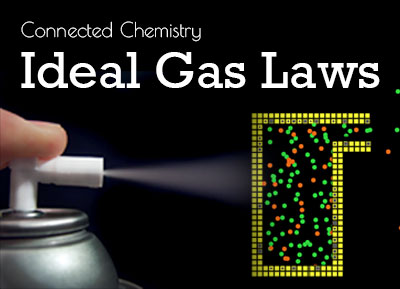
Overview
This lesson introduces the students a real world fixed-volume container with gas: an air duster can. An explanation of the contents of the air duster can requires an understanding of gas particle behavior, which students will develop throughout the unit. The students are asked to generate three types of explanations about the can: (1) a text-based explanation, (2) a sketch illustration, and (3) a computational model. They develop the third explanation in three sub-steps. First, they build a static representation of the gas particle system using a NetLogo particle sandbox model. Then, they define the behavior of gas particles (e.g., their movement, collisions) using a blocks-based modeling toolkit. In this step, they work with only a few particles. Lastly, they bring in their gas behaviors to the particle sandbox and make their static model dynamic.
Throughout this lesson, they learn the rules that govern their behaviors and interactions by adding the rules into the model one-by-one. While observing the consequences of “running” these rules and the resulting motion of the particles. In addition, gain a familiarity with a microscopic view of the system and with the NetLogo model interface they will use again in later activities. This familiarity is a critical learning goal in the first Activity, since the use of computer interface (buttons, sliders, switches, etc...) becomes progressively more sophisticated in future activities. Finally, students reflect on their models and modeling practices.
Underlying Pages
-
0. Student Directions -
Preview as Student
-
1. What is an air duster? -
Preview as Student
-
2. What is inside the can? -
Preview as Student
-
3. Discussion: Let's talk about our sketches -
Preview as Student
-
4. Using computational modeling to constructing a static model of the air duster can -
Preview as Student
-
5. Discussion: Let's talk about our static models -
Preview as Student
-
6. How do the particles behave? -
Preview as Student
-
7. Testing our particle code with many particles -
Preview as Student
-
8. Discussion: How do the particles behave? -
Preview as Student
-
9. Reflecting on our models -
Preview as Student
Standards
Next Generation Science Standards
- Physical Science
- NGSS Crosscutting Concept
- NGSS Practice
Computational Thinking in STEM
- Data Practices
- Modeling and Simulation Practices
- Computational Problem Solving Practices
- Systems Thinking Practices
